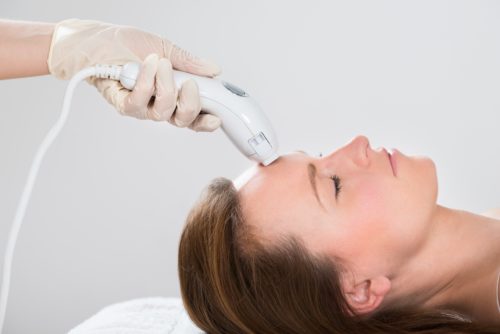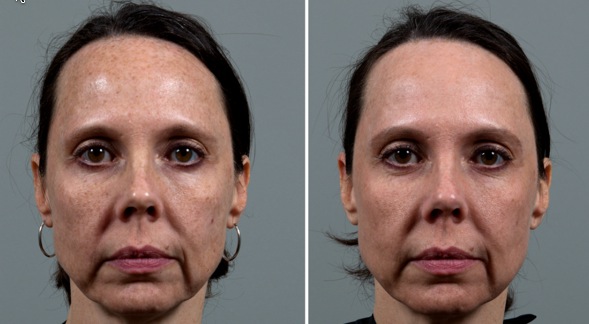Vitamin C and retinol are two of the most popular skincare ingredients today. These potent compounds have garnered significant attention for their ability to transform your complexion, tackling a wide range of skin concerns. From fading dark spots to reducing fine lines and promoting overall skin radiance, Vitamin C and Retinol have become staples in the quest for healthy, youthful skin
So, scroll down and check out how you can use both Vitamin C and Retinol in your daily skincare routine for radiant skin.
What is Vitamin c?
Vitamin C is a water-soluble nutrient that is essential for human health. It is found in many fruits and vegetables, including citrus fruits, tomatoes, berries, and broccoli. Vitamin C is necessary for the production of collagen, a protein that is essential for healthy skin, hair, and nails.
One study published in the Journal of Clinical and Aesthetic Dermatology found that topical vitamin C can help improve the appearance of wrinkles, fine lines, and hyperpigmentation. Participants in the study who applied a vitamin C serum twice daily saw a significant improvement in their skin’s overall appearance.
What is retinol?
Retinol is a form of vitamin A that is used in skincare products to improve the appearance of the skin.
A 2007 study published in the Archives of Dermatology found that topical retinol can help improve the appearance of fine lines and wrinkles. Participants who applied a retinol cream to their face for 24 weeks saw a significant reduction in the appearance of wrinkles and an improvement in their skin’s texture. Retinol works by increasing cell turnover and stimulating the production of collagen. This helps to reduce the appearance of wrinkles and fine lines, and improve skin texture and tone. Retinol can also help to reduce the appearance of acne by unclogging pores and reducing inflammation.
Retinol is a very effective ingredient, but it can also be irritating to the skin, especially when you first start using it.
Can You Use Vitamin C and Retinol Together?
Yes, you can use vitamin C and retinol together. “However, it is important to use vitamin C and retinol carefully, as they can be irritating to the skin, especially when used together,” said Dr. Michele Green, a dermatologist based in New York City. “It is important to start with a low concentration of both ingredients and gradually increase the concentration as your skin tolerates it.”
Using Vitamin C and Retinol together in your skincare routine can yield impressive benefits. According to a study published in the journal “Dermatology and Therapy” in 2021: Using vitamin C and retinol together can be more effective in reducing the signs of aging than using either ingredient alone. The study found that participants who used both vitamin C and retinol had a significant reduction in fine lines, wrinkles, and age spots after 12 weeks of treatment.
Vitamin C is a powerful antioxidant that helps protect the skin from environmental damage, brightens your complexion, and promotes collagen production. When combined with Retinol, which also stimulates collagen and aids in cell turnover, the two can work synergistically to improve skin texture, and fade dark spots and hyperpigmentation. Together, they create a well-rounded anti-aging and skin-rejuvenating team, promoting a more youthful, radiant, and even-toned complexion.
How to incorporate Vitamin C and Retinol in Your Skincare Routine
Using Vitamin C and Retinol in your skincare routine can be a dynamic duo for achieving healthy, radiant skin! We recommend you start with Vitamin C in the morning as it’s a potent antioxidant that shields your skin from free radicals and brightens your complexion. Vitamin C is a powerful antioxidant that can help to protect the skin from damage caused by free radicals. Free radicals are unstable molecules that can damage cells and contribute to premature aging. After cleansing and toning, apply a Vitamin C serum, letting it soak in for a few minutes. Follow up with sunscreen to protect your skin from UV damage.
In the evening, introduce Retinol, which helps with collagen production and fine lines. Retinol is most effective at night, when the skin is in repair mode. After cleansing and toning again, apply a small amount of Retinol, gradually increasing the frequency to avoid irritation. Remember to hydrate and moisturize generously to keep your skin happy and balanced. Over time, this dynamic duo can give you a radiant, youthful glow!
tips to use vitamin C and retinol for beginners
- Start with low concentrations. Both vitamin C and retinol can be irritating to the skin, especially when you first start using them.
- Choose a stable form of vitamin C. Vitamin C is a water-soluble ingredient, so it can oxidize easily. Choosing a product in a stable form, such as L-ascorbic acid or sodium ascorbyl phosphate, to ensure that the vitamin C remains active and effective.
- Look for a retinol product that is in a time-released form. This will help to reduce the risk of irritation.
- Apply vitamin C in the morning and retinol at night.
- Use a moisturizer after applying both vitamin C and retinol.
- Wear sunscreen every day, even on cloudy days. Vitamin C and retinol can make the skin more sensitive to the sun.
FAQs
- Can vitamin C help with acne? Yes, vitamin C can help improve the appearance of acne scars and hyperpigmentation. It can also help reduce inflammation, which can help prevent future breakouts.
- What percentage of retinol should I use? Start with a low concentration of retinol, around 0.3%, and gradually increase it over time as your skin adjusts.
- Can retinol be used during the day? Retinol should be used at night when your skin is in repair mode. During the day, always wear sunscreen to protect your skin from UV damage.
- Can I use vitamin C and retinol if I have sensitive skin? Yes, you can use both ingredients if you have sensitive skin. However, it’s best to start with a lower concentration and gradually increase it over time to avoid irritation.
Final Takeaway
Both vitamin C and retinol offer a range of benefits for your skin. They work in different ways and can be incorporated into your skincare routine to help improve the appearance of fine lines and wrinkles, brighten your complexion, and improve skin texture. Remember to introduce these ingredients gradually and always wear sunscreen during the day when using retinol.





